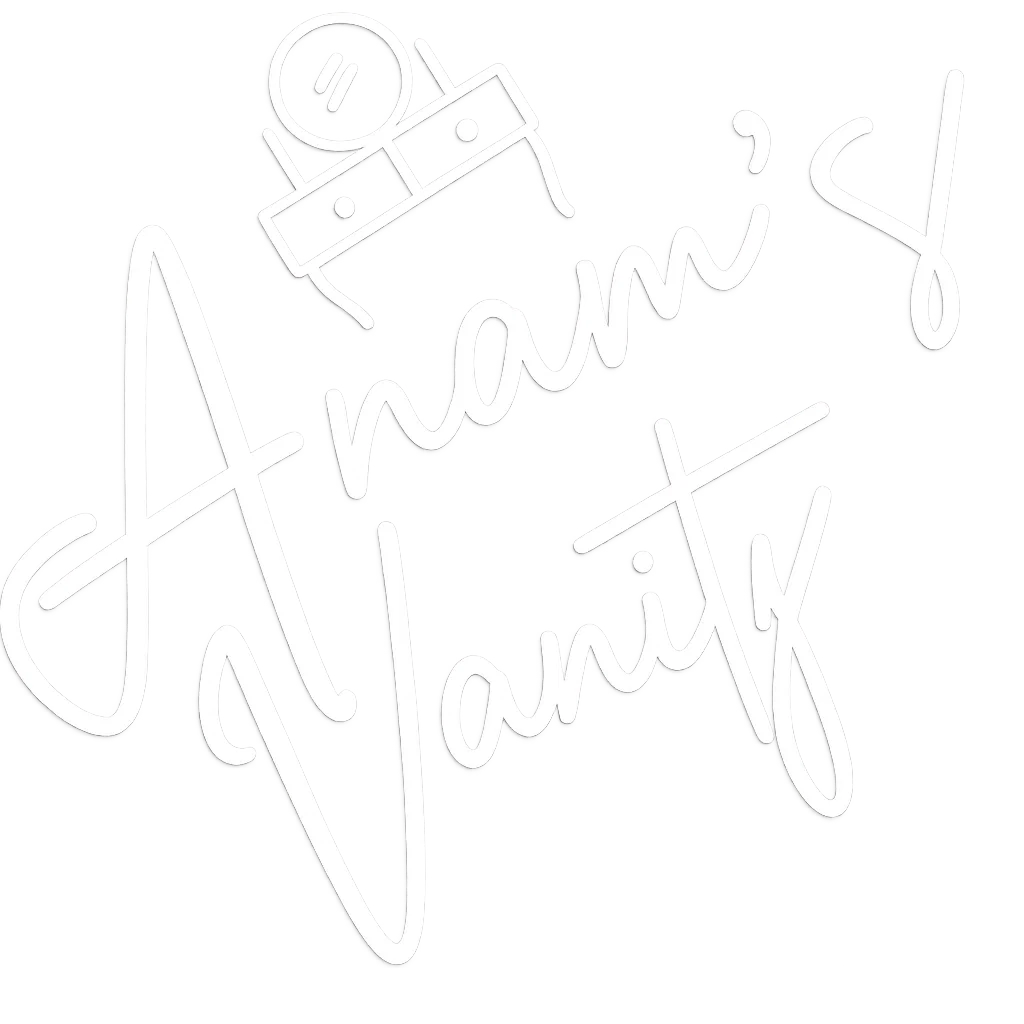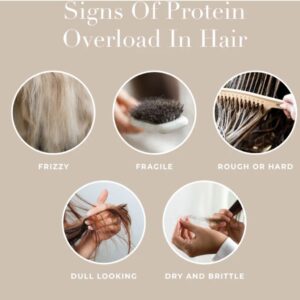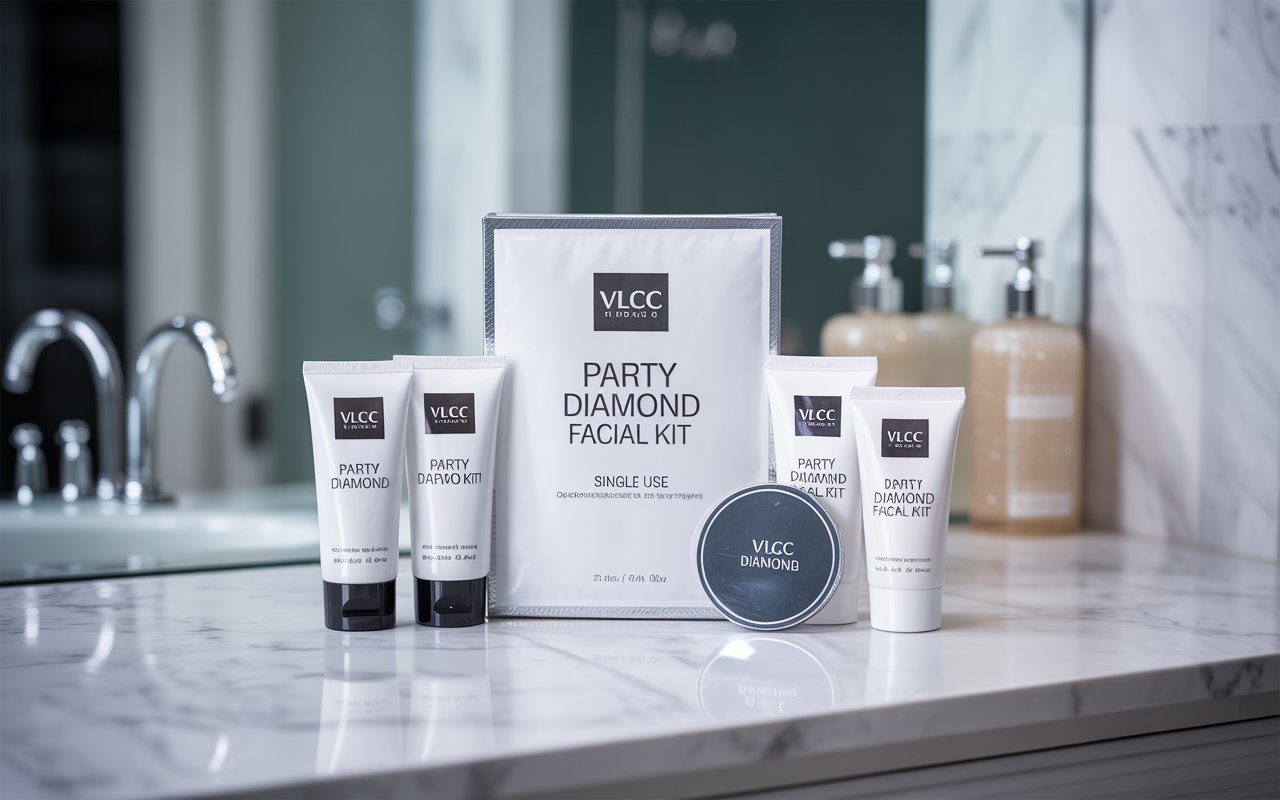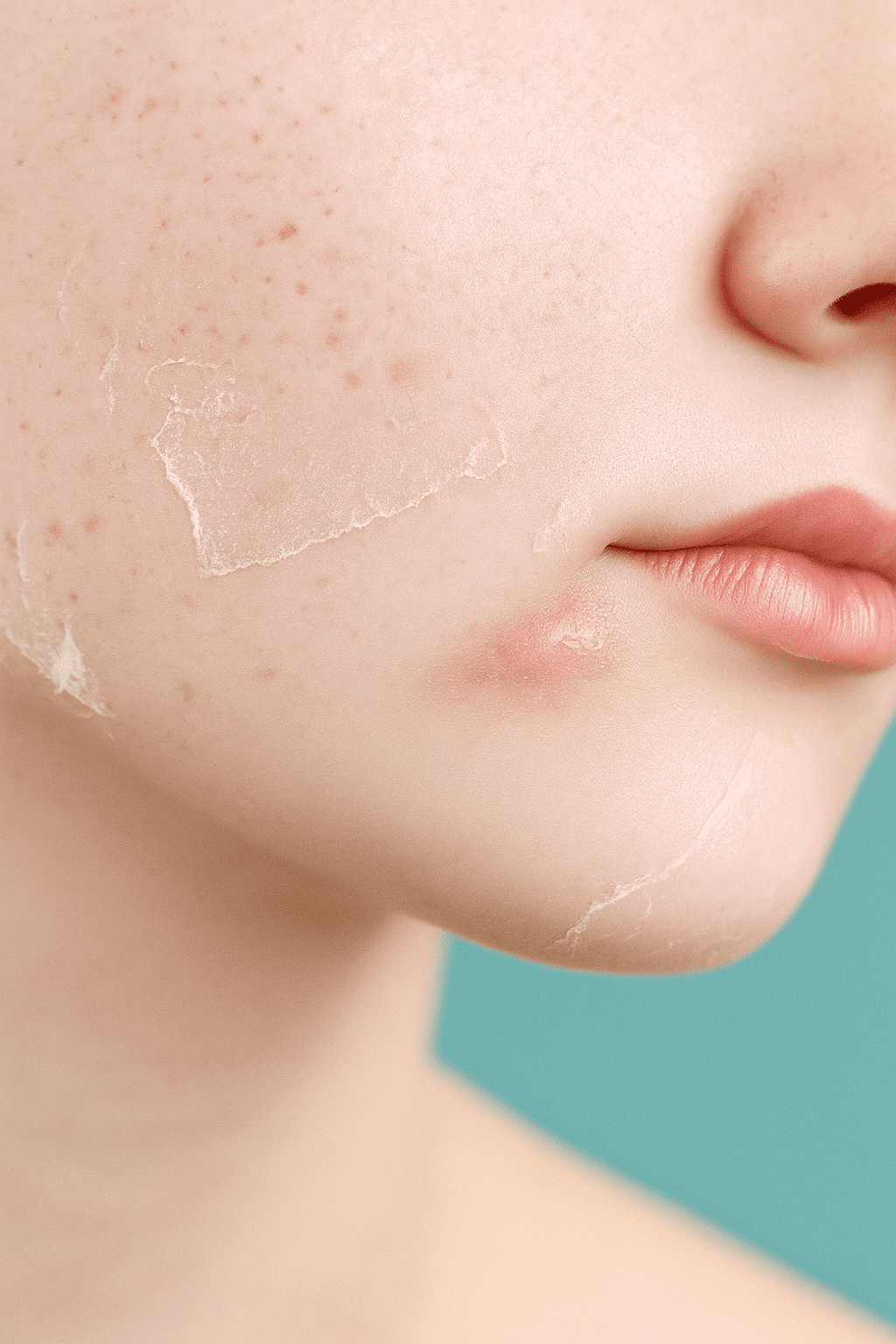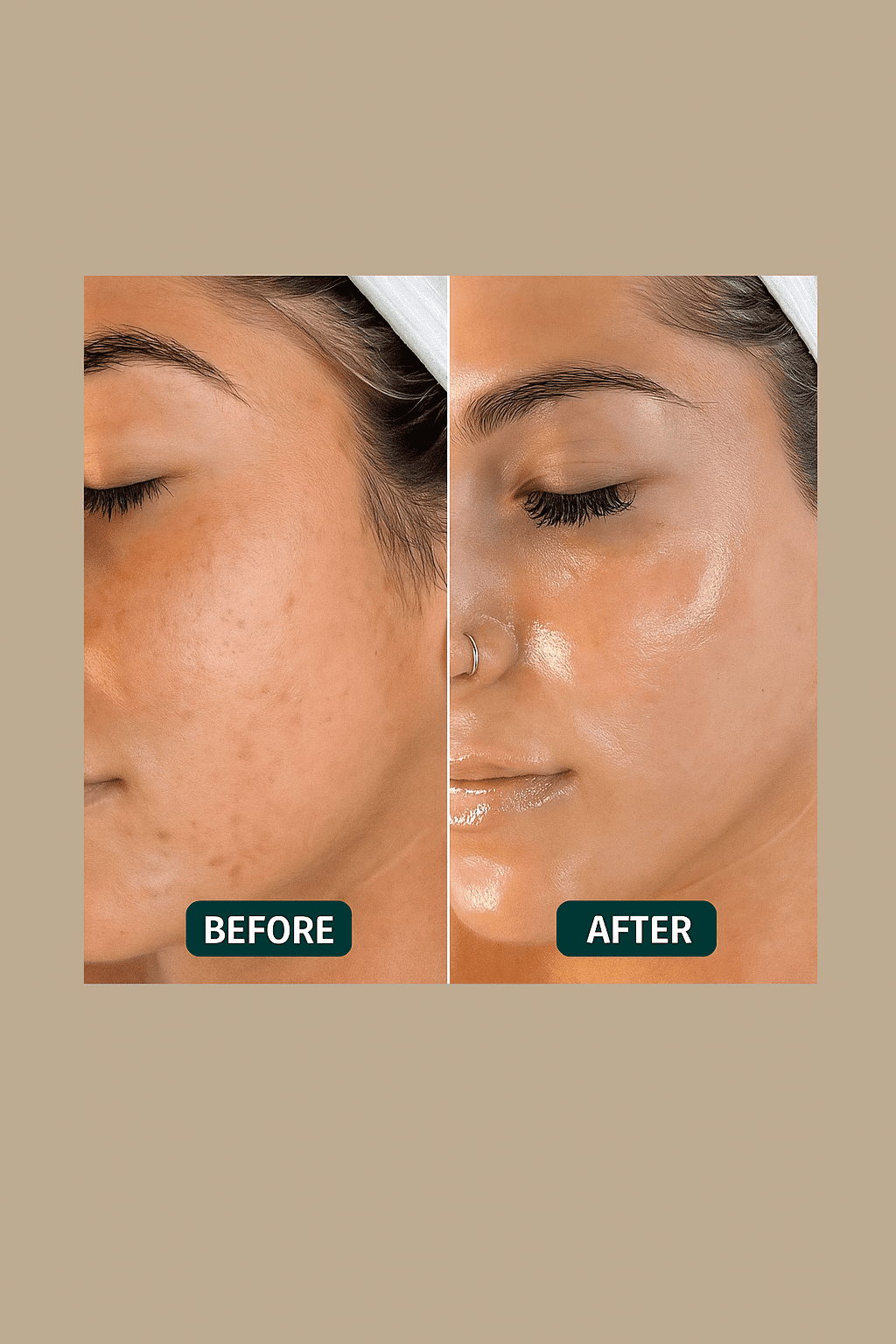Having too much protein in hair can make it feel dry, brittle, and stiff. When your hair gets overloaded with protein, it loses moisture, leading to breakage and dullness.
Table of Contents
- What Is Protein Overload in Hair?
- Why Too Much Protein Is Bad for Hair
- 7 Signs of Protein Buildup in Hair
- How to Fix Protein Overload in Hair Fast
- Rebalancing Protein vs Moisture in Hair Long-Term
- Final Thoughts on Over-Proteinized Hair
- Best Products for Protein-Moisture Balance
When Your Hair Feels Like Straw
Have you ever moisturized your hair repeatedly, only for it to still feel stiff, brittle, and straw-like? No matter how much conditioner you apply, your strands refuse to soften, tangling easily and snapping with the slightest tug. If this sounds familiar, your hair might be suffering from protein overload, a frustrating but fixable condition caused by too much protein and not enough moisture.
The good news? You don’t need drastic treatments or expensive salon visits to fix it. With a few simple adjustments to your hair care routine, you can restore your hair’s natural softness, elasticity, and shine.
In this guide, we’ll break down:
What protein overload is (and why it happens)
How to tell if your hair has too much (key signs to watch for)
Simple, effective fixes to bring your hair back to life
How to prevent overload in the future
Let’s get your hair feeling healthy and hydrated again!
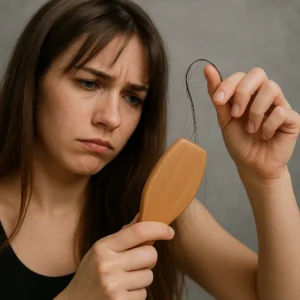
What Is Protein Overload in Hair?
it is a crucial building block for strong, resilient hair. It helps repair damage, reduce breakage, and maintain structure, especially for chemically treated, colored, or heat-damaged hair.
Your hair needs a balance between protein and moisture to stay flexible, smooth, and strong.
When this balance is disrupted, usually from overusing rich products, your hair can become stiff, dry, and prone to snapping.
What Causes Protein Overload?
occurs when your hair gets more protein than it needs, leading to an imbalance. Common causes include:
- Overuse of protein treatments (e.g., deep conditioners, masks, or reconstructors).
- Using heavy protein-based products (shampoos, conditioners, or leave-ins with keratin, collagen
- Protein-moisture imbalance (not balancing treatments with hydrating products).
if you want skin analysis then visit my blog:-https://anamsvanity.com/before-the-glow-important-only-skin-analysis/
https://anamsvanity.com/dry-skin-on-face-best-facials-deliver-results/
Protein vs. Moisture: Quick Comparison
Signs of Too Much Protein | Signs of Too Much Moisture |
Brittle, stiff hair | Limp, overly soft hair |
Excessive breakage | Lack of volume |
Rough texture | Hair feels mushy when wet |
Expert Tip: “If your hair snaps easily when stretched, it needs moisture. If it stretches too much without breaking, it needs protein.”
7 Clear Signs of Protein Buildup in Hair
This makes it brittle and dry instead of strong. Look for these clear signs to know if you have overloaded your hair.
1:Hair Feels Stiff and Crunchy
Your hair should be soft and flexible. If your hair shows Your hair Too Much Protein
- Dry and straw-like
- Rough and stiff to the touch
- Like it has no movement or bounce
2:Hair Breaks Easily
Healthy hair stretches a little before it breaks. Protein-heavy hair is weak and snaps instantly. You will notice more breakage:
- When you brush it
- When you try to style it
- When you simply run your fingers through it
3:Loss of Elasticity
This is a major sign of protein overload. To test your hair’s elasticity, take a single wet strand and gently pull it. Healthy hair will stretch and then return to its normal length. If it snaps immediately with no stretch, it has lost its elasticity.
4:Brittle and Dull Appearance
Too much protein strips your hair of its natural shine. It will look:
- Dull and lifeless
- Brittle and rough
- Like it has no natural softness
5:Sudden Increase in Split Ends
If you see a lot of split ends suddenly, especially after a protein treatment, it is a key sign. Your hair is so brittle that the ends are splitting and breaking off.
6:Product Build-Up and No Absorption
Your hair might start to repel moisture. This means:
- Products just sit on your hair
- Your hair does not absorb conditioners
- It can feel waxy or coated
7:Dry, Frizzy Hair Despite Conditioning
You are using a good moisturizing conditioner, but your hair still feels dry and frizzy. This happens because the protein buildup creates a barrier that locks moisture out.

How to Fix Protein Overload in Hair Fast
If your hair feels stiff, straw-like, and brittle, you might have protein overload. The fastest way to fix this is to stop all protein treatments immediately. This gives your hair a break so you can start adding moisture back.
1:Stop All Protein Treatments Now
First, check your current hair products. Avoid anything that says “keratin,” “strengthening,” or “reconstructing.” Put away your protein masks and special treatments for now. Your main goal is to focus only on moisture.
2:Use Deep Moisturizing Treatments
Next, you need to give your hair a big dose of hydration.
- Use a deep conditioner that says “moisturizing” or “hydrating.”
- Look for products with ingredients like shea butter or glycerin.
- These are the best products for protein-moisture balance.
3:Clarify Your Hair to Remove Build-Up
Protein build-up can block moisture from getting in. Use a clarifying shampoo one time to wash away all the extra protein. This will clean your hair and get it ready to absorb your moisturizing products.
4:Restore Lost Moisture Daily
After clarifying, it’s time to hydrate.
- Use a leave-in conditioner every day.
- Apply light, hydrating oils like argan oil to damp hair.
- A steam treatment can also help open the hair cuticle.
5:Adjust Your Long-Term Hair Routine
To prevent this from happening again, change your habits.
- Only use protein products once or twice a month.
- Always follow a protein treatment with a deep conditioner.
- Listen to your hair if it starts to feel stiff again, switch back to moisture.
How to Balance Protein and Moisture in Hair
Keeping your hair healthy is an ongoing process. You must pay attention to what your hair is telling you. A good long-term plan prevents future problems.
- Do a monthly stretch test. This quick check helps you catch an imbalance early, before it causes damage.
- Feel your hair regularly. Is it brittle and stiff? Add a moisturizing treatment. Is it soft, limp, and mushy? Use a light protein product.
- Find a simple routine. Switch between a moisturizing conditioner and a light protein conditioner every few washes. This routine for protein sensitivity keeps your hair strong without overload.
Protein vs Moisture Quick Comparison
Signs of Too Much Protein | Signs of Too Much Moisture |
Stiff, straw-like hair | Soft, limp, or greasy hair |
Excessive breakage | Lack of elasticity (stretches but doesn’t bounce back) |
Rough texture | Hair feels mushy when wet |
Preventing Protein Overload in the Future
- Check product labels – Avoid layering multiple products with it in the formula. Overuse can lead to dryness or breakage.
- Follow a schedule – Apply treatments just once a month if your hair is in good condition. Too much can throw off your hair’s balance.
- Listen to your hair – If it feels dry, stiff, or brittle, ease up and focus on hydration. Moisture-replenishing products can help restore softness and elasticity.
Symptom | Protein Overload | Moisture Deficiency |
Hair Texture | Brittle, rough, stiff | Soft but weak, mushy when wet |
Elasticity | Breaks easily when stretched | Overly stretchy, doesn’t bounce back |
Breakage | More breakage when dry | More breakage when wet |
Product Buildup | Common | Rare (hair absorbs moisture but lacks strength) |
How Often to Use Protein Treatments
f your hair is weak, thin, or suffering from excessive hair fall, visit our top-rated salon on Canal Road, Anamsvaty Salon. Our experts will analyze your hair problem and provide the best treatment tailored to your needs.
We offer high-quality, affordable hair care services with a focus on solving hair issues, not charging heavy bills. Our goal is to give you healthy, beautiful hair without unnecessary expenses.
Visit the best salon on Canal Road—where your hair’s health is our priority!𝐀𝐧𝐚𝐦’𝐬 𝐕𝐚𝐧𝐢𝐭𝐲
Makeup Artist
MAKEUP | HAIR | SPA
+923246322468
Best Deep Conditioner for Protein-Sensitive Hair
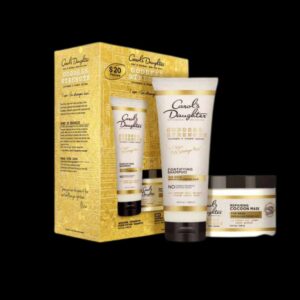
If your hair feels dry, brittle, or straw-like, it might be sensitive to it. Using the wrong products can make the problem worse by disrupting moisture levels and causing further breakage.
Here are the best sulfate-free, lightweight options without it to help restore hydration, softness, and balance.
If you do not recover hair loss from shampoo treatments, then do not waste time; check with your doctor.
Sulfate-Free Clarifying Shampoos
- Gently removes buildup without stripping natural oils.
- Ideal for resetting hair without harsh sulfates.
- Look for ingredients like aloe vera or chamomile instead of those rich in it to keep your hair hydrated and calm.
Hydrating Deep Conditioners
- Choose formulas without it, enriched with nourishing ingredients like shea butter or argan oil. These help restore hydration and repair moisture loss caused by overuse. For best results, use once a week to maintain softness, elasticity, and balance..
Leave-In Moisturizers Without Protein
- Lightweight sprays or creams with glycerin or jojoba oil help prevent too much of it while locking in moisture. Apply to damp hair for even coverage and lasting hydration.
Natural Remedies & DIY Fixes for Protein Overload
If commercial products aren’t enough, try these natural solutions to restore moisture balance.
Apple Cider Vinegar Rinse
- How to use: Mix 1 part ACV with 3 parts water. Rinse hair after shampooing.
- Benefits: Removes excess buildup and smoothes the hair cuticle.
Aloe Vera & Honey Mask
- How to use: Blend fresh aloe gel with 1 tbsp honey. Apply for 20 minutes, then rinse.
- Benefits: Soothes the scalp and adds deep hydration.
Coconut Milk Hydration Treatment
- How to use: Soak hair in coconut milk for 30 minutes before washing.
- Benefits: Rich in fatty acids to restore softness.
Honey and Olive Oil Mask
- How to use: Mix 2 tbsp olive oil with 1 tbsp honey. Warm slightly and apply.
- Benefits: Repairs dryness and adds shine.
How to Fix Protein-Moisture Imbalance
If your hair is stiff, breaks easily, or lacks elasticity, follow these steps:
- Stop using products that contain too much of it (look for ingredients like keratin or wheat extract on labels).
- Switch to a moisture-rich routine—deep condition weekly to keep hair soft and hydrated.
- Use lukewarm water when washing, as hot water can strip away natural oils.
- Trim damaged ends regularly to prevent breakage and support healthy growth.
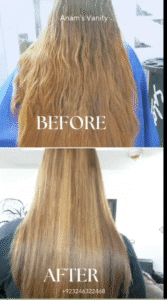
Best Low-Protein Hair Care Routine
Gentle Moisturizing Shampoos
- Choose sulfate-free shampoos to protect your scalp and keep natural oils intact.
- Look for gentle, hydrating ingredients like aloe vera, glycerin, and hyaluronic acid.
- Avoid shampoos with ingredients like hydrolyzed forms of it (e.g., keratin or collagen) if your hair is sensitive to it.
- Using the wrong products can lead to dryness, breakage, and loss of moisture balance.
Lightweight Conditioners
- Pick water-based, silicone-free conditioners to keep your hair hydrated without causing buildup. Look for moisturizing ingredients like shea butter, jojoba, or argan oil. If your hair feels dry or stiff easily, avoid heavy strengthening ingredients like wheat or soy extracts
Avoid Heavy Ingredients
- Deep conditioners with keratin or amino acids.
- Leave-in treatments labeled as “strengthening” or “repairing” (unless hair is damaged).
How Often to Use Protein Treatments
Hair Type | Protein Treatment Frequency | Lighter Alternatives |
Fine or Low-Porosity | Once every 6-8 weeks | Rice water spray |
Medium-Porosity | Once a month | Silk amino acids |
High-Porosity | Every 2-3 weeks | Hydrolyzed wheat protein |
How Long Does It Take to Recover from
Recovery time depends on:
- Hair porosity (low porosity takes longer).
- Severity of overload (mild cases: 2–4 weeks, severe cases: 4–8 weeks).
- Moisture treatments (deep conditioning speeds recovery).
Steps to Speed Up Recovery:
- Stop protein treatments temporarily.
- Use moisturizing products (look for glycerin, aloe vera, and honey).
- Avoid heat styling to prevent further damage.
How to Balance Protein and Moisture in Curly Hair
Curly hair needs both protein and moisture to stay healthy.
Simple Routine for Balance
- Treatment with it: Use every 4–6 weeks, if needed.
- Deep conditioning: Apply weekly with a moisture-rich mask to keep hair soft and hydrated.
- Leave-in conditioner: Helps maintain lasting hydration and manageability.
Signs of Imbalance:
- Too much protein = Brittle, stiff curls.
- Too much moisture = Limp, overly soft hair.
Light Protein vs. Heavy Protein
Light doses | Heavy doses |
(e.g., Hydrolyzed Wheat) | (e.g., Keratin) |
Good for mild weakness | Best for severe damage |
Use weekly/bi-weekly | Use monthly |
Best for fine hair: Light amounts of it.
Best for chemically treated hair: Heavier doses (temporarily) to help repair and strengthen.
Does Rice Water Cause Too Much of It??
Yes, if overused. Rice water is high in protein and can make hair stiff.
Safe Use:
- Dilute with water.
- Use once a month.
- Follow with a moisturizing conditioner.
faqs:
How do I recover my hair from too much protein?
Stop using protein-rich products and switch to moisturizing shampoos and conditioners. Use hydrating masks with ingredients like aloe vera or shea butter. A clarifying shampoo can help remove buildup.
How to repair protein-overloaded hair?
Focus on deep conditioning treatments and avoid anything labeled “strengthening” or “rebuilding.” Hydration is key. Weekly moisture masks and leave-in conditioners work well for recovery.
How to balance out protein in hair?
Use both protein and moisture treatments—but not at the same time. If your hair feels stiff, add moisture. If it’s soft and limp, use a light protein product occasionally.
How long does protein stay in your hair?
Protein from treatments can stay in your hair for 2 to 6 weeks. It depends on the product, your hair type, and how often you wash your hair.
Does shampoo remove protein from hair?
Yes, especially clarifying shampoos. They help remove product buildup, including excess protein, making it easier for your hair to absorb moisture again.
Is rice water a protein treatment?
Yes, rice water contains amino acids, which are small proteins. Using it too often can cause protein buildup, especially in low-porosity or protein-sensitive hair.
How do I remove protein treatment from my hair?
Use a clarifying shampoo once to remove buildup. Follow with deep moisturizing treatments for a few weeks. Avoid any products with hydrolyzed protein, keratin, or amino acids.
